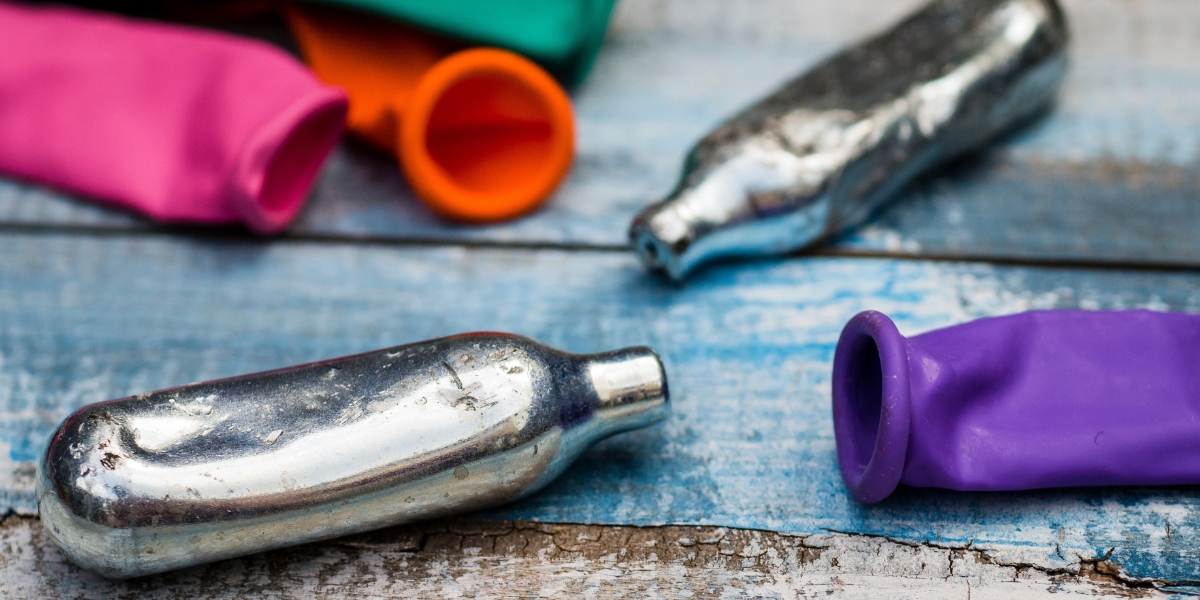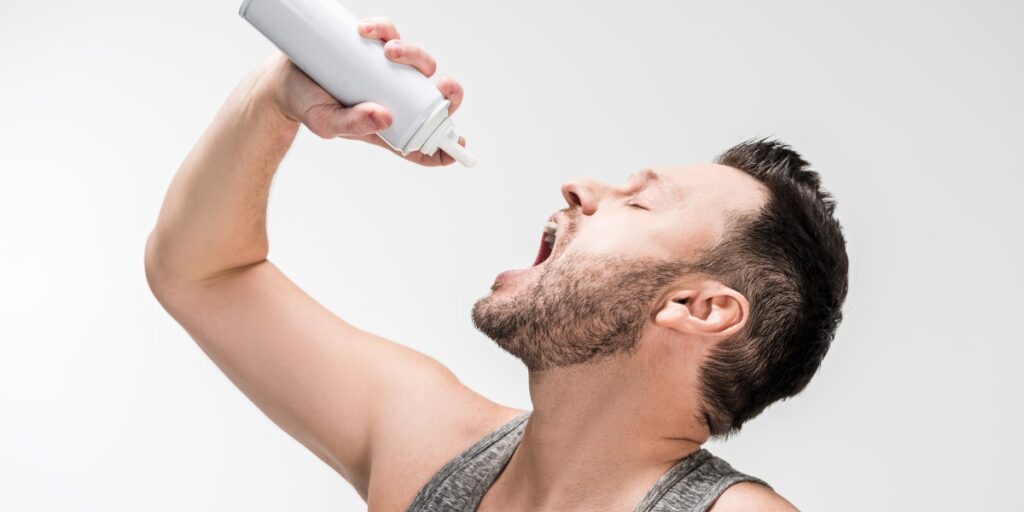Nitrous Oxide Addiction and Treatment


Medical Writer:
Reviewer:

Johnny Kim
Executive Psychotherapist
Medical Writer:
Reviewer:

Johnny Kim
Executive Psychotherapist
Nitrous oxide addiction is not a new phenomenon but is a growing public health problem. For centuries nitrous oxide has been used in medical settings and recreationally on the side.
Many falsely believe that medical professionals using nitrous oxide frequently means it is safe and not dangerous like other controlled dissociative drugs. In reality, nitrous oxide addiction is a growing public health threat among people 12 years and older, partially because of how easy it is to find and abuse and how addictive inhaling nitrous oxide is. Learning the risk and signs of nitrous oxide abuse and how to find effective treatment programs is essential to prevent full-blown addiction and fatal accidents.
Table of Contents
Toggle
What Is Nitrous Oxide?
Nitrous oxide is a gas, sometimes known as laughing gas, with no color or odor, that users inhale for a short-lived high. In medical settings, most commonly in dentists’ offices, nitrous oxide is used to relax patients and offer pain relief. Household products like whipped cream canisters and car performance enhancers also contain nitrous oxide.
The nickname laughing gas comes from the side effect of nitrous oxide that causes people to become easily amused and have fits of laughter. Other nicknames and slang for nitrous oxide include:
- Whippets
- N20
- Hippy crack
- Nitro
- NOS
- Balloons
- Buzz bombs
Nitrous oxide is not a controlled substance and is readily available in stores, making it an attractive high for teenagers and young adults, who mistakenly believe it is safer than other drugs.
Recreational Use of Nitrous Oxide
Recreational use of nitrous oxide is increasing, especially in adolescents ages 12 to 21, according to a 2011 Substance Abuse and Mental Health Service Administration (SAMHSA) survey showing that almost 2 million people had tried or misused nitrous oxide at least once in the past year. People will inhale nitrous oxide directly from whipped cream containers and chargers or suck the gas out of the balloons or plastic bags filled with the gas.
Recreational misuse of nitrous oxide is difficult to track since it is legal and doesn’t require age restrictions or identification to purchase. The National Institutes of Health (NIH) follows nitrous oxide misuse through case studies and emergency department reports.
The National Institute on Drug Abuse (NIDA) ranks nitrous oxide as the most abused inhalant and club drug. These institutes agree that nitrous oxide abuse is increasing among young people, and the side effects and long-term consequences are worrying.
Is Nitrous Oxide Addictive?
Nitrous oxide is addictive with repeated use. Though the effects are short-term, people inhaling nitrous oxide experience immediate and intense euphoria and happiness. As people attempt to maintain their high, they take repeated hits, which increases tolerance and the likelihood of developing an addiction to nitrous oxide. The comedown and withdrawal symptoms from inhalants like nitrous oxide can be similar to alcohol withdrawal and cause intense cravings, causing people to continue using to avoid them.
Nitrous Oxide Addiction and Abuse
Nitrous oxide addiction and abuse were first documented in the late 1700s and early 1800s by medical professionals who had access to it through medical settings. More recently, nitrous oxide abuse has been increasingly common because of its availability and affordability in stores.
Nitrous oxide abuse frequently gets overlooked or dismissed because people use it with other drugs and alcohol that cause more prominent side effects. However, as more emergencies and long-term studies come to light, medical professionals and addiction treatment specialists are becoming alarmed and calling for greater awareness.
Nitrous oxide addiction becomes harder to hide the longer it is untreated. Unlike other drugs, laughing gas doesn’t have long-lasting visible effects; however, there are signs of addiction if you believe a loved one is struggling with an inhalant substance use disorder.
Signs of nitrous oxide abuse and addiction include:
- Changes in behavior patterns and increased secrecy
- Chemical odors or sweet-smelling breath
- Redness or sores around the mouth
- Changes in speech and attention span
- Empty canisters, balloons, or plastic bags in their room or car
- Loss of balance and coordination
- Bloodshot eyes
- Lethargy
- Mood swings
- Chronic headache
- Insomnia
- Sweating
Many people report using laughing gas to self-medicate mental health symptoms and disorders. When people develop a substance use disorder alongside another physical or mental health condition, they are considered co-occurring disorders. When left unaddressed, they will feed off each other and perpetuate the cycle of addiction.

Nitrous Oxide Side Effects
The desired effects of nitrous oxide are relaxation, euphoria, memory loss, and pain reduction. However, in controlled medical settings, nitrous oxide is regulated and mixed with oxygen to control the effects and ensure safety. People that inhale nitrous oxide directly from canisters or balloons risk intense and dangerous side effects.
Short-term effects and side effects of nitrous oxide include:
- Rush of euphoria
- Dizziness
- Lightheadedness
- Loss of coordination
- Slurred speech
- Confusion
- Short-term memory loss
- Fits of laughter
- Sweating
- Nausea
- Vomiting
- Drooling
- High blood pressure
- Increased heart rate
- Coughing
- Loss of consciousness
- Hallucinations
Long-term side effects of nitrous oxide addiction include:
- Nerve damage
- Brain damage
- Decreased muscle control and strength
- Paranoia
- Memory loss
- Appetite changes
- Loss of balance
- Mania
- Depression
- Numbness in limbs
- Confusion
- Ulcers
- Seizures
- Strokes
- Withdrawal symptoms
Inhaling nitrous oxide interrupts red blood cell production. Red blood cells are crucial to circulation, healing, and vitamin B12 production. Vitamin B12 deficiencies build over time and contribute to long-term side effects, including anemia, slow-healing wounds, and changes in menstrual cycles.
One case study noted a man with severe vitamin B12 deficiency and increasing paralysis when he entered the emergency room. Eventually, the man admitted he chronically abused nitrous oxide. Another case study of a 21-year-old woman showed double vision, nausea, ringing in her ears, and weakness in her legs. She admitted to inhaling nitrous oxide almost daily to calm her anxiety. Doctors could help with the vitamin deficiencies in both cases, but some neurological effects were irreversible.
Nitrous Oxide Overdose Symptoms
Nitrous oxide overdose symptoms are very similar to outright suffocation and death because of how fast inhaling nitrous oxide forces oxygen out of the lungs. It is surprisingly easy to overdose on nitrous oxide.
In medical settings, oxygen balances out nitrous oxide to ensure safety and no lasting effects. However, when people abuse nitrous oxide, they get intense and immediate results that can quickly become an overdose.
Nitrous oxide overdose symptoms include:
- Coughing
- Shallow breathing
- Gasping for air
- Bluish lips, fingers, and toes
- Inability to stay awake
- Eyes rolling back
- Drooling
- Choking
- Seizures
Call 911 immediately if you believe a nitrous oxide overdose is happening.
Nitrous oxide overdoses also have a high chance of secondary injuries such as concussions from passing out, falling over, or victimization while unconscious.

Nitrous Oxide Addiction Treatment
Nitrous oxide abuse can be confusing and isolating, but authentic, research-based treatment is available.
At White Oak Recovery Center, we specialize in evidence-based treatment plans tailored to our residents and their unique needs. Our goal is to ensure that you experience all the benefits of residential treatment, including the tools and confidence to ensure your long-term success in recovery long after you leave our beautiful treatment center.
Contact us to plant the seed of a life rooted in recovery.

Am I covered for addiction treatment?
Your insurance may cover treatment. Call now for an entirely free and confidential assessment. Recovery starts with a phone call.

- Einsiedler, Maximilian, et al. “A Rise in Cases of Nitrous Oxide Abuse: Neurological Complications and Biological Findings.” Journal of Neurology, vol. 269, Jul. 2021.
- Gillman, M A. “Nitrous Oxide Abuse in Perspective.” Clinical Neuropharmacology vol. 15, Aug. 1992.
- Lundin, Michael, et al. “Case Report: One Month of Nitrous Oxide Abuse Causing Acute Vitamin B12 Deficiency With Severe Neuropsychiatric Symptoms.” BMJ Case Reports, vol. 12, Feb. 2019.
- Xiang, Yuanyuan et al. “Recreational Nitrous Oxide Abuse: Prevalence, Neurotoxicity, and Treatment.” Neurotoxicity Research vol. 39, Mar. 2021.
- Allan, Julaine, et al. “A Systematic Review of Recreational Nitrous Oxide Use: Implications for Policy, Service Delivery, and Individuals.” International Journal of Environmental Research and Public Health vol. 19, Sep. 2022.
- Garland, Eric, et al. “Nitrous Oxide Inhalation Among Adolescents: Prevalence, Correlates, and Co-Occurrence with Volatile Solvent Inhalation.” Journal of Psychoactive Drugs, vol. 41, Dec. 2019.
- Algahtani, Hussein, et al. “Nitrous Oxide Recreational Abuse Presenting With Myeloneuropathy and Mimicking Guillain-Barre Syndrome.” Intractable & Rare Diseases Research, vol. 9, Feb. 2020.
- Rossaint, Rolf, et al. “Should we Still use Nitrous Oxide in our Clinical Practice? No!.” Turkish Journal of Anaesthesiology and Reanimation, vol. 45, Feb. 2017.
- “What are Inhalants?.” National Institute on Drug Abuse, Sep. 2022.
- “Research Report Series: Inhalants.” National Institute on Drug Abuse, Feb. 2014.
Medical Disclaimer:







